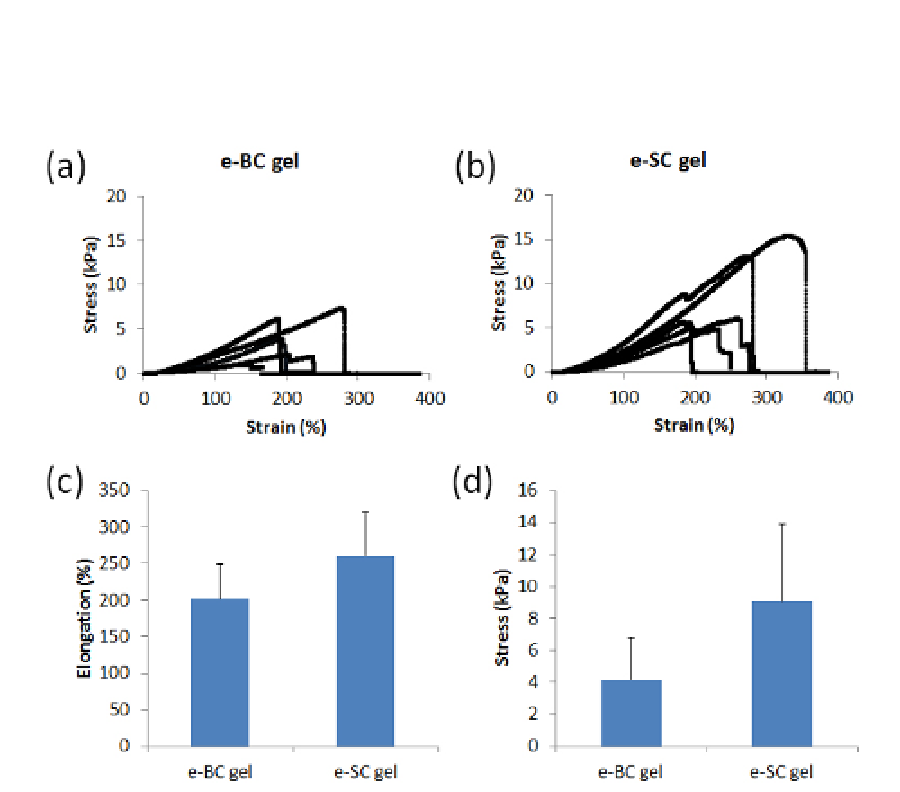Biomedical Engineering Reference
In-Depth Information
collagen molecules probably plays an important role in the elongation, i.e., the bend
structure of denatured collagen fibrils observed in Fig. 6b is considered to provide its
rubber-like stretchability.
Fig. 7. Stress-strain curves generated from tensile testing of e-BC gels (a) and e-SC gels (b).
The specimen (5 × 3 × 12 mm) was gripped to achieve a gauge length of 8 mm and stretched
in the strain rate of 1.25%/s. (c) Elongation at the break of the e-BC gel and e-SC gel. (d)
Ultimate strength at the break of the e-BC gel and e-SC gel. Values are mean ± SD (n=5).
The mean values ± SD of ultimate strength at the break of the e-BC gel and e-SC gel were 4.1
± 2.6 kPa and 9.0 ± 4.8 kPa, respectively (Fig. 7d). The strength of the e-BC gels was lower
than that of e-SC gels, although there was no significant difference between the two.
Collagen exhibits a limited mechanical resistance so that collagen requires an additional
skeletal material such as inorganic materials [38]. Bio-inspired crosslinking can provide a
collagen scaffold with high mechanical strength as well as stretchability. It is useful without
the addition of any other material. Because a collagen solution is a precursor for fabrication
of various collagen forms, bio-inspired crosslinking would be a useful fabrication process of
widely various collagen biomaterials.
5. Biological properties of e-BC gel
To investigate the potential of the e-BC gel for use as a cell culture scaffold, we measured the
growth rates of human umbilical vein endothelial cells (HUVECs) cultured on the e-BC gel.

